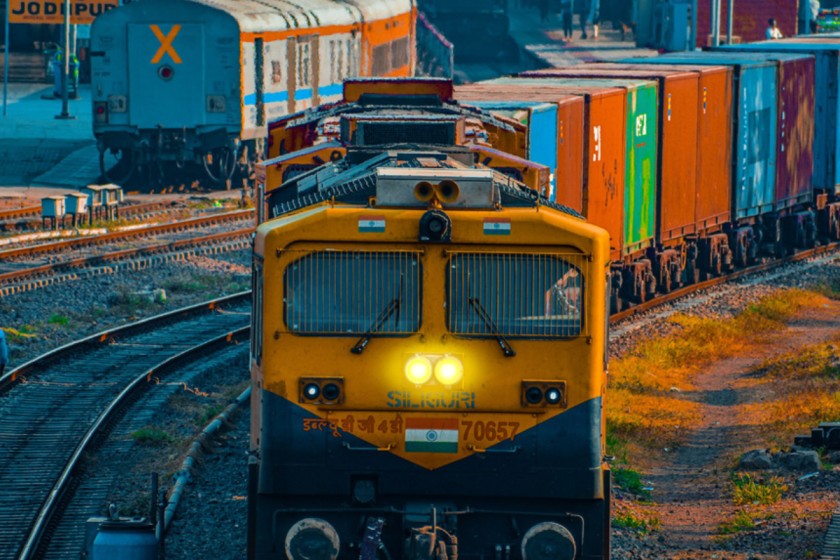- July 13, 2023
India journeying on the fast lane

India’s global positioning in manufacturing and trade is strongly related with reforms for improving infrastructure and EXIM logistics. Recognising infrastructure as a critical growth engine for the economy, reforms such as the prime minister’s Gati Shakti National Master Plan (NMP) and the National Logistics Policy have focussed on improving logistics infrastructure and services for goods and passenger movement both domestically and across borders.
In its report for 2023 on Logistics Performance Index (LPI), the World Bank has acknowledged India’s progress in the direction of improved logistics efficiency. The report shares the LPI across 139 nations, and has placed India at the 38th spot, a jump of six places over our rank in 2018. Compared to 2014, our country’s rank has improved by 16, up from 54 to 38 in 2023.
LPI is ‘a survey-based quantification of qualitative perceptions’ across six broad parameters that consider Customs, Infrastructure, International shipments, Logistics competence and quality of logistics services, Timeliness, and Tracking and Tracing. The World Bank gives India’s example as an emerging economy that has invested in infrastructure and technologies since 2015, connecting the ports on both the eastern and western coasts to economic centres in the hinterland. Such investments, apart from other factors, is why India’s dwell time for containers at ports leapfrogged that of many developed nations. Between May to October 2022, India’s dwell time was at a low of 3 days, while it was 4 days for UAE and South Africa, 7 for the US, and 10 for Germany.
The report continues to uphold India as a good case study of a country that has brought in supply chain visibility through a digitisation platform, the National Logistics Data Bank Services Ltd (NLDBSL). The report explains how the Logistics Data Bank (LDB) tracks and traces the movement of EXIM containers in India through Radio Frequency Identification (RFID) tags, thereby making it possible for consignees to undertake end-to-end tracking of their supply chain. Such a cargo tracing mechanism, introduced initially on the western coast in 2016, and covering all major ports and private ports today, is credited with improved the dwell time of containers at the Indian ports. To quote from the report, “With the introduction of cargo tracking, dwell time in the eastern port of Visakhapatnam fell from 32.4 days in 2015 to 5.3 days in 2019.”
Recognising the critical role of the logistics sector in the country’s future, the government launched the Logistics Databank Project (LDB) as a digital system for tracking supply chains. The NLDBSL is run as a special purpose vehicle (SPV) between National Industrial Corridor Development Corporation (NICDC) and the Japanese company Nippon Electric Company (NEC), Limited. LDB integrates digital information available with various agencies across the supply chain to provide detailed real time information on EXIM container movement. The platform tracks all of India’s EXIM container volume, and the information is available for consignees to access through a single portal, with a mobile app as well. Thereby, LDB provides visibility and big data analytics related to India’s containerised EXIM logistics.
Since it went live in July 2016, LDB has tracked 60 million EXIM containers. With a combination of technologies related to RFID, Internet of Things (IoT), and big data analytics for tracking and tracing India’s containerised EXIM cargo, LDB has integrated with major Indian ports, the busiest toll plazas, about 400 Container Freight Stations (CFS)/Inland Container Depots (ICDs), empty yards at ports, special economic zones (SEZs), and even the integrated check posts on Nepal and Bangladesh borders. Almost 3,000 RFID readers have been installed by the SPV at all major routes on road and rail, including Dedicated Freight Corridors, to capture the RFID data on movement of containers.
With the data fetched and integrated by LDB, various analytics are conducted, including calculation of port dwell time for containers, congestion analysis of transit movement of freight, speed analysis of container movement, performance benchmarking, transit time analysis (from Port to CFS or vice-versa), and more. This analysis is reported on a monthly, quarterly, and annual basis and shared with all concerned line ministries, port authorities, terminal operators, custom agencies, and other stakeholders.
Regular analytics are, in turn, used by concerned agencies to identify pain points and areas of improvement. An analysis of data from LDB in last few years shows improvement in container handling performance, evacuation of road bound containers, and container speed on major highways, besides in-container evacuation performance of the ICDs and CFSs. Container speed on major highways, such as on the Delhi-Mumbai route and the one connecting to Mundra Port has also improved in comparison with 2018.
Today, LDB has not only extended its services up to the Nepal and Bangladesh borders to ensure efficient cross-border trade, but it also uses the maritime tracking system to track India’s EXIM containers till the international port of first call. Further, exploring the possibility to leverage our FTAs to integrate with similar international systems is a part of next steps to ensure that export containers reach the end destination in the most efficient manner, giving a boost to our trade performance.
This is just the start of a long journey on the fast lane. The inclusion of innovative technologies for improvement of the logistics ecosystem will further boost our speed, and, as an icing on the cake, our global logistics rankings within the next few years. This speed will surely lead us to our cherished goal of becoming a developed nation by 2047.
Written by Ms. Sumita Dawra. The author is Special secretary to the Government of India (Logistics, Ministry of Commerce & Industry). Views are personal and do not represent the stand of this publication.
